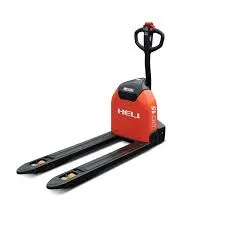


The Design of Chain Hoists A Comprehensive Overview
Chain hoists are essential tools in various industries, providing a reliable means for lifting and transporting heavy loads. Whether used in construction, manufacturing, or warehousing, these devices are vital for ensuring efficiency and safety in material handling. This article delves into the key aspects of chain hoist design, highlighting their components, functionality, and considerations for optimal performance.
Components of a Chain Hoist
A chain hoist typically consists of several critical components that work together to lift and lower heavy objects. The main elements include
1. Chain The chain is the heart of the hoist, serving as the primary lifting mechanism. Made from high-strength steel, the chain must be designed to withstand the weight of the load while ensuring durability and resistance to wear and tear.
2. Hook The hook is attached to the end of the chain and is used to secure the load being lifted. It must be designed to provide a secure grip while allowing for easy attachment and detachment.
3. Gear Mechanism This consists of a system of gears that convert the rotational motion of the handle or motor into vertical lifting force. A well-designed gear mechanism increases the hoist's efficiency, allowing for easier lifting with less manual effort.
4. Drum The chain wraps around the drum, which is driven by the gear mechanism. The design of the drum is crucial, as it must allow for smooth chain movement while preventing slippage.
5. Frame and Housing The frame supports all the components, providing strength and stability. The design of the frame is critical to ensure safety and durability under heavy loads.
Functionality and Operation

Chain hoists operate through a simple yet effective principle. When the operator pulls the chain (or activates the motor), the gear mechanism rotates the drum, causing the chain to lift the load. The operator can control the speed and height of the lift by adjusting the force applied to the chain. For powered chain hoists, an electric motor automates this process, increasing efficiency significantly.
Design Considerations
When designing a chain hoist, several factors must be considered to ensure optimal performance
1. Load Capacity The hoist should be designed to handle specific load capacities according to industry standards. It’s essential to select a hoist that exceeds the maximum expected load to ensure safety.
2. Material Selection The materials used in the construction of the chain hoist affect its strength and longevity. High-quality, corrosion-resistant materials should be chosen to withstand harsh environments.
3. Safety Features Safety is paramount in hoist design. Features like overload protection, safety hooks, and emergency stop mechanisms should be integrated into the design to prevent accidents and ensure user safety.
4. Maintenance A well-designed chain hoist should allow for easy access to its components for maintenance and inspection. Regular maintenance is vital to prolong the hoist's lifespan and maintain its operational efficiency.
Conclusion
The design of chain hoists is a critical aspect of modern lifting and handling solutions. By understanding the essential components, functionality, and design considerations, manufacturers and users can select and utilize these tools effectively. As industries continue to evolve, innovations in chain hoist design will undoubtedly enhance efficiency, safety, and performance in various applications. Emphasizing quality design and safety features will further solidify the role of chain hoists in the industrial landscape.



